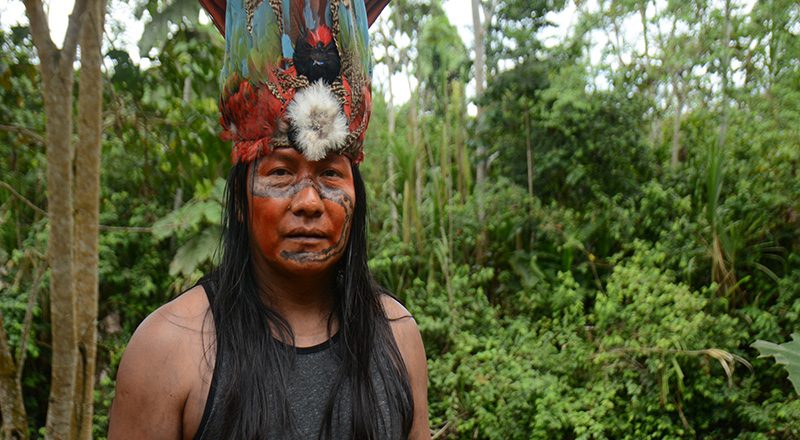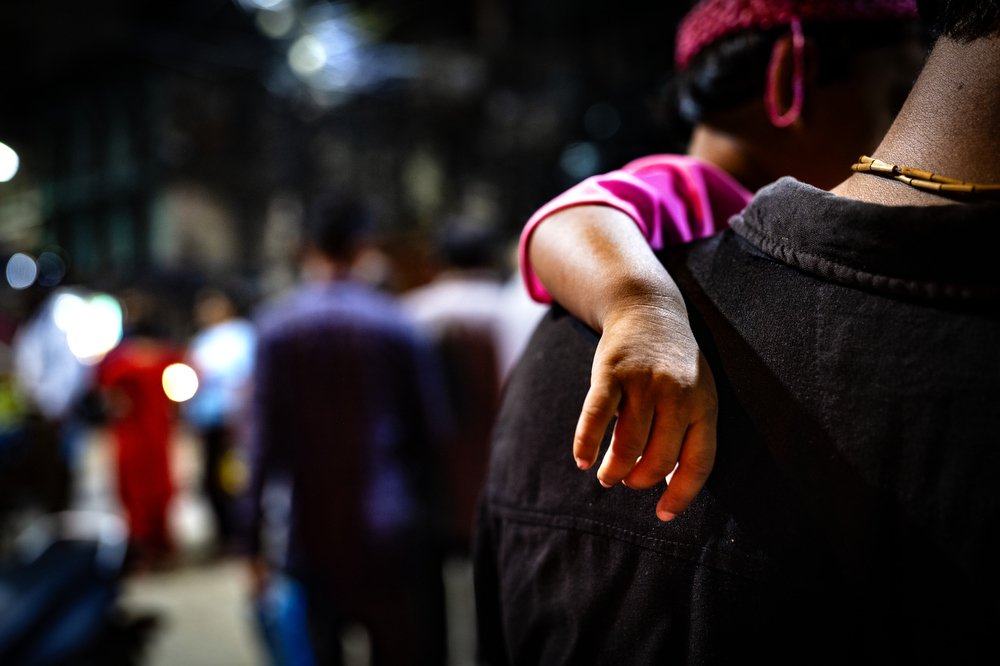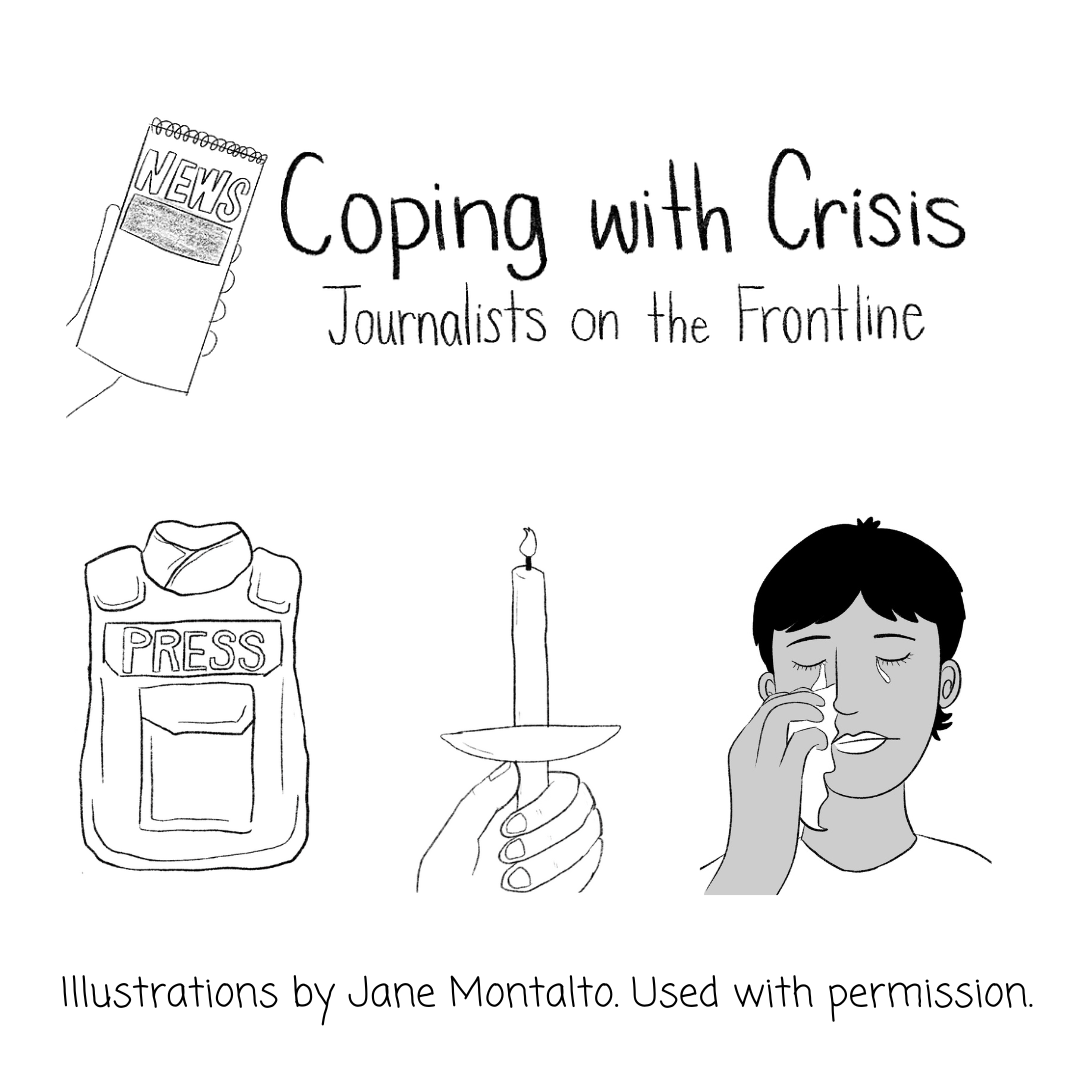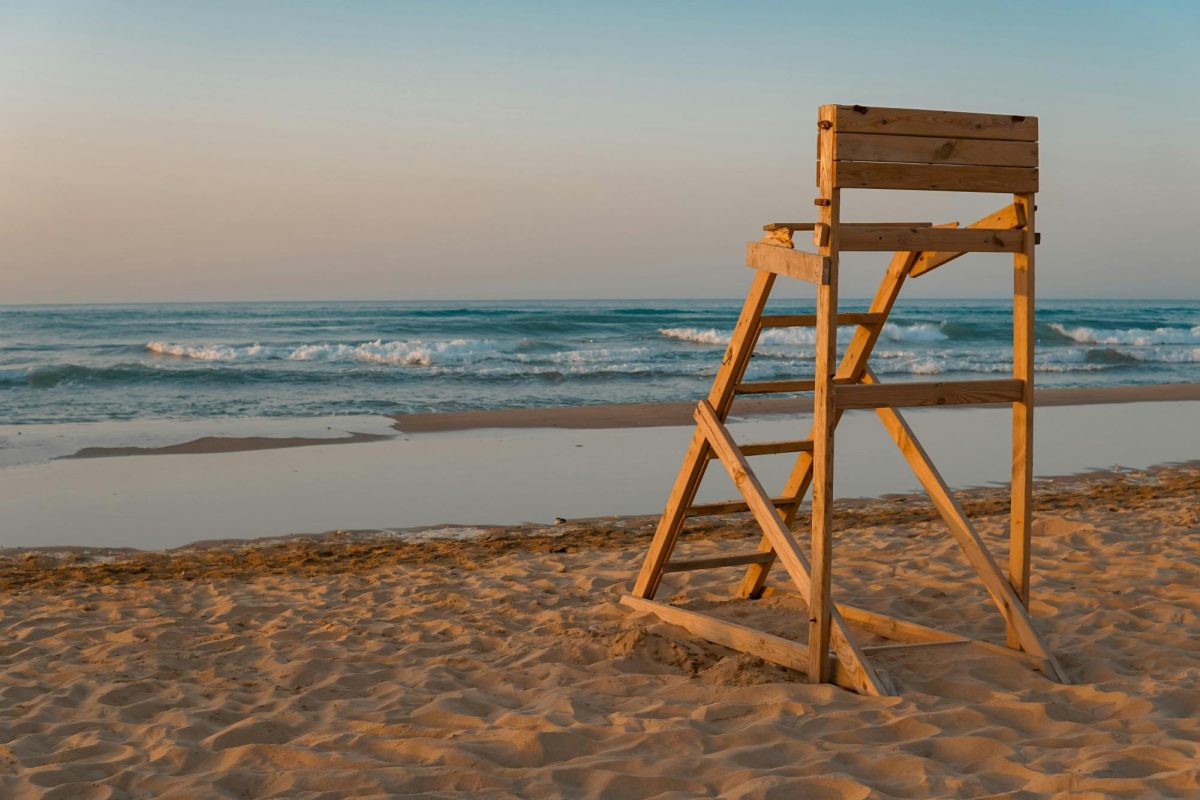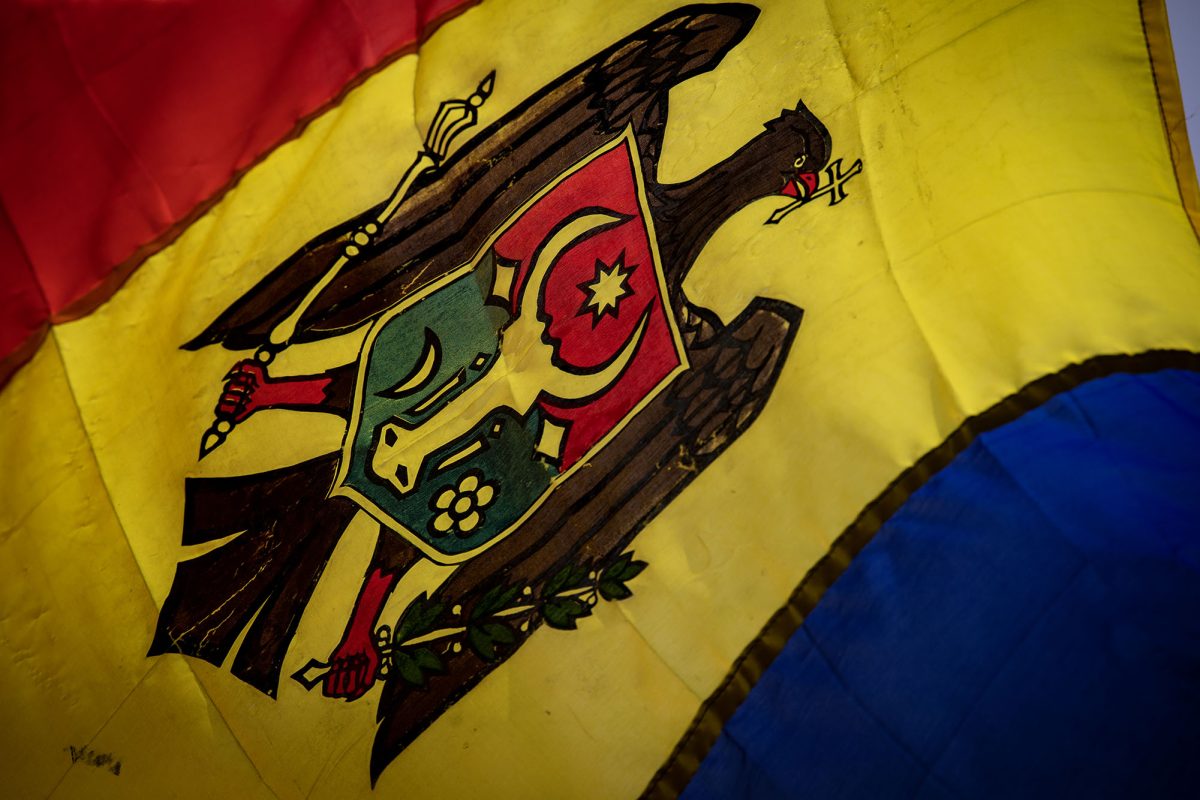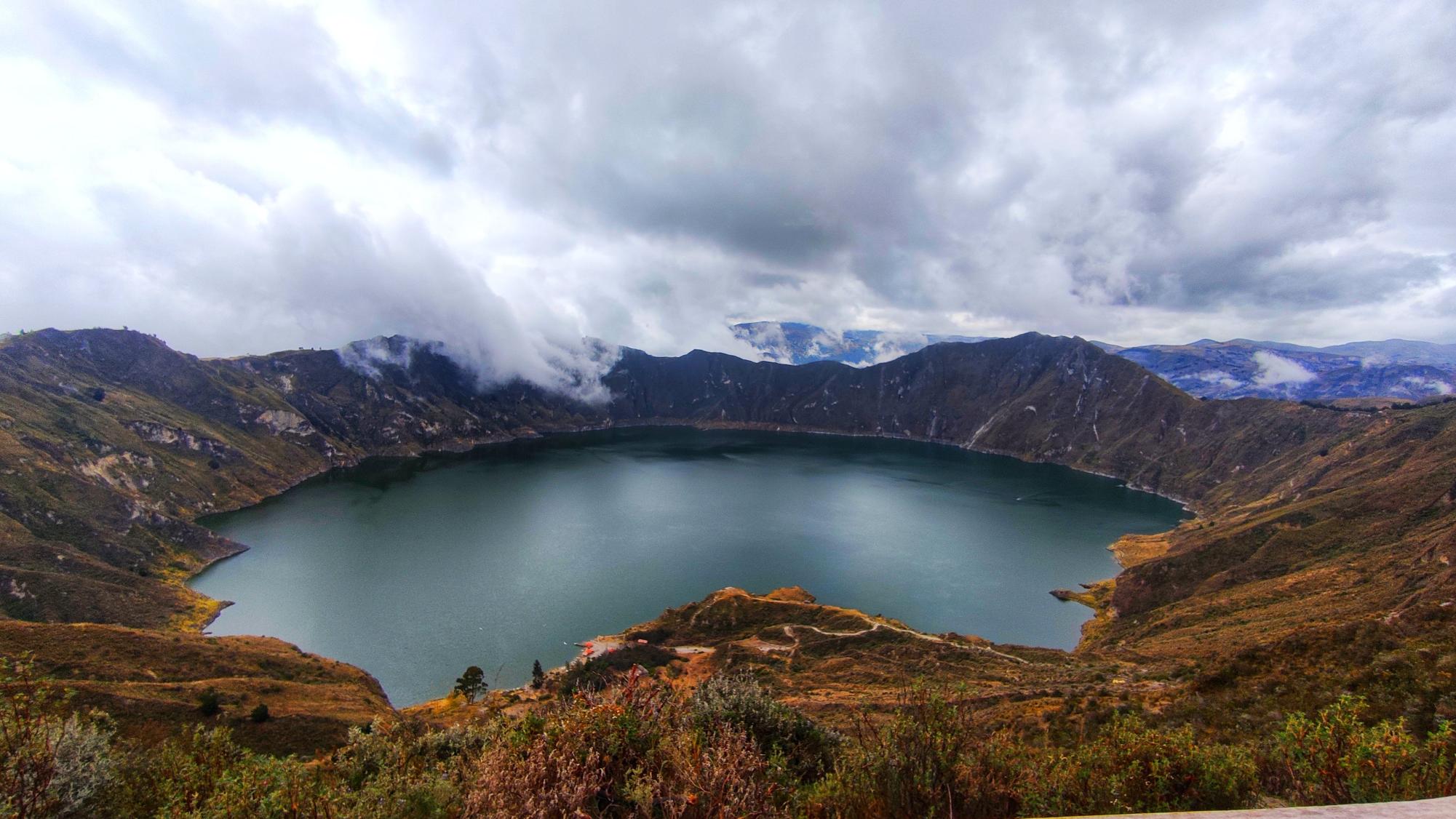
Manari Ushigua, the leader of the Sápara nation, sat in a ring with a group of Americans who were visiting his community in the Ecuadorean rainforest. He was interpreting their dreams as part of a daily ritual as ancient as his people.
One by one, the visitors recounted what they remembered from the night. Through each story, Ushigua, 43, sat, shoulders relaxed, as his eyes scanned the speaker for telling body language. His long hair was held back from his face by a beige headband that featured a pattern representing a monkey, feet planted on the earth, raising his arms to welcome the sun’s radiant energy.
As a woman told Ushigua her dream of a distant war, a wind began to whip through the trees. Ushigua rose to his feet as the thatched roof of the pavilion where he sat began to shudder.
“That wind is a wayward spirit,” he told the group. “Sometimes, spirits get lost on their journeys, just like people. He is telling us he needs our help.”
Manari led everyone to the edge of the pavilion and told them to shout at the wind to help the spirit would find its way. After two rounds of screaming, the wind died down.
“There,” he said through a smile. “Now he’s all right.”
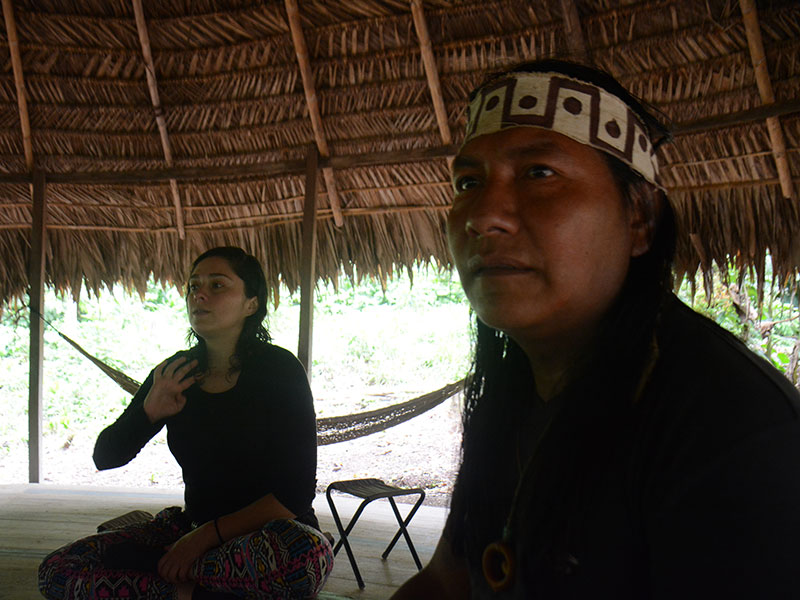
As his nation’s leader, Ushigua is expected to serve as the Sápara’s spiritual fulcrum. He must heal people, give guidance and resolve internal and external conflicts.
But in addition to his traditional responsibilities, Manari has become the Sáparas’ link to the Western world, tasked with guiding his people to safety in a country that would see their territory scoured for oil.
“Our fight is not to slow the advancement of the rest of the world,” he said. “Our fight is to defend life.”
His solution, developed in conjunction with his community and the indigenous-advocacy group Terra Mater, is the Naku Experience, a project that brings in outsiders and exposes them to the Sápara’s traditional lifestyle.
“I think it’s a good project,” Carlos Larrea Maldonado, a political scientist and professor at Universidad Andina Simón Bolívar, said. “I know Manari, and I think he is a very talented person. He has a lot of knowledge of his own culture and the ability to help people with dream therapy. I think they have every possibility to be successful, but it is very difficult.”
Manari Ushigua was born in 1973, the ninth of 12 children of a shaman father, also named Manari. Many Sápara regard the elder Ushigua as their nation’s greatest leader.
Despite bearing his father’s name, the younger Ushigua was far from commanding in his youth, family members said.
“We used to tease him a lot,” Maria Ushigua, Manari’s niece, three years his junior, said. “It took him a long time to grow his front teeth, so we used to pick on him. He would get really pissed off.”
Today, Manari is a reluctant patriarch, one who rarely acknowledges the greatness others see in him. But even so, he has gained respect around the world for striving to protect the legacy of his people.
Editor’s note: All interviews were conducted through a translator.
Two hours after the sun has set and most of the Sápara are settling in for the night, Hilario Gualinga is still at work in a kitchen two miles from his own. He is cleaning up from a dinner he cooked for nine guests, who have moved away from the table to gaze up at the glittering equatorial constellations.
One of them yells at Gualinga to turn off the lights. He is left to wash dishes in complete darkness.
“Of course, I wish I could help out more at home, but I have a responsibility to my community, for the Sápara, to protect this territory,” Gualinga said.
Gualinga’s responsibility is for the Naku Project, an ecotourism attraction that brings 150 to 200 visitors annually into the Sápara territory along the Ecuadorean headwaters of the Amazon River.
The Sápara are an indigenous nation with fewer than 500 people remaining, from the hundreds of thousands they were in the early 20th century. They live in the southeastern side of the Ecuadorean Amazon basin, a 20-minute flight from the nearest town, Puyo.
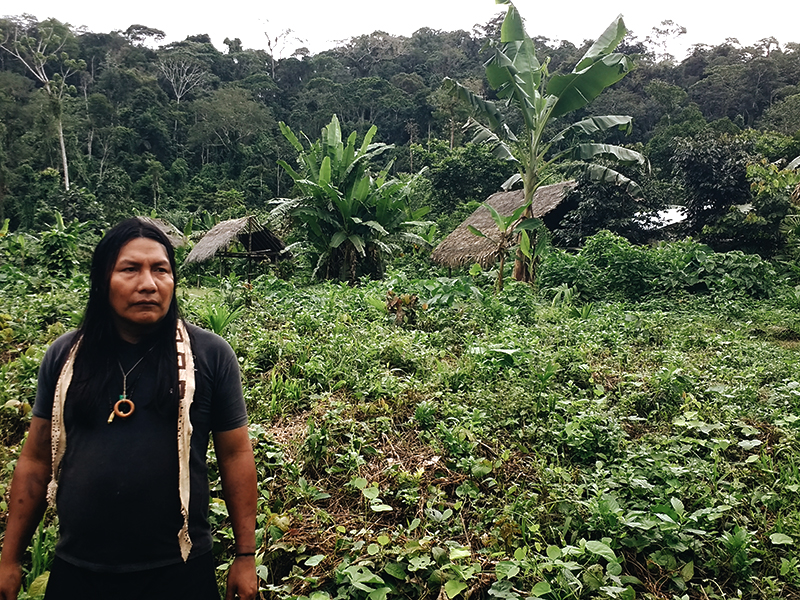
After he finishes cleaning the kitchen at Naku, where paying guests enjoy limited electricity, cots draped in mosquito netting, toilets, showers and daily cleaning service, Gualinga will hike through the jungle and cross the Conambo River to return to his family. He lives in a compound of thatched, open-sided buildings with his wife, Luisa, three young sons and a one-week-old baby, along with chickens, a tame macaw and a pack of hunting dogs.
Time away from traditional domestic life is the compromise that indigenous communities face when maintaining ecotourism projects like Naku.
The Sápara, working with an Ecuadorean foundation called Terra Mater, created the Naku Project in 2013. The project is a response to threats by the Ecuadorean government to allow foreign oil companies to explore for, and extract oil in Sápara territorial reserves. Naku, the Sápara word for “jungle,” is an alternative, an economic initiative that the Sápara hope will support them in their battle to preserve and defend their way of life and the ecological health of the Amazon Basin.
Ecuador, an OPEC member, is rich in oil and other natural resources. This presents many opportunities for development, but it also raises questions about the social responsibility of those involved in the exploitation of these resources.
No one denies that past resource extraction in Ecuadorean Amazonia led to gross contamination, deforestation and destruction of communities, Luis Calero Hidalgo, a legal consultant and former energy minister of Ecuador, said during a conversation with JWW. But the champions of the extractive industries say that Ecuador’s 2008 constitution established a firm commitment to human rights, labor rights, the “rights of nature” and anticorruption efforts.
Companies can responsibly and carefully extract oil from Amazon territories because of the high standards set by this legal framework, said Eduardo López Robayo, a former minister of energy and mines and the founder and and CEO of SERTECPET, a Quito-based multinational company that manages more than 250 oil-drilling systems in Ecuador. And sooner or later, he said, that extraction will happen.
“In the end, the country needs these resources to grow,” López Robayo said.
The Sápara are committed to sharing their traditional way of life with the external world in hopes that these outsiders will cooperate and protect the jungle.
“We are a culture that is disappearing,” Manari Ushigua, 43, a spiritual healer who is the chief spokesperson for the Sápara, said to the guests as they gathered around the table after a tobacco cleansing ritual under the stars. The lights came back on, and Gualinga continued to work in the kitchen behind them.
“We don’t have many left, so when people visit our community, it strengthens our souls and renews our drive to fight for our home,” Manari said.
For these ecotourism projects to have a chance at success, an indigenous group needs high motivation, a fair distribution of work and benefits for members of the community, and well-developed infrastructure, Carlos Larrea Maldonado, a social science professor at the Universidad Andina Simon Bolívar, said. Larrea has spent decades studying the impact of resource extraction and deforestation on climate and communities in Amazonia and has visited many projects similar to Naku.
Such projects need people who are willing to work hard, as Gualinga does.
One out of three ecotourism projects is successful, Larrea said. The ones that fail often faced internal conflicts or lacked resources and training.
“As far as I know, it is a good project because the Sápara leader, Manari, has a lot of knowledge of his own culture,” Larrea said.
The indigenous people of Añangu in Yasuní National Park on the Napo River, on the north side of the Amazon basin, created a successful ecotourism project that still prospers today. Twenty years ago, the 100 families of the community made a difficult internal decision to stop hunting. People come to Yasuní to see the area’s unique biodiversity and animals, and the Añangu realized that if they continued to hunt, animals would leave their territory and the tribe would not be able to profit from tourism.
Although it is often hard to predict which projects will flourish, these initiatives can be realistic alternatives for indigenous Amazonian communities, Larrea said.
Naku could generate more projects such as bringing secondary education to Llanchamacocha, Mauricio Rodas, 22, a Kichwa man married to a Sápara woman and the father of two, said. This would allow students to stay within the community to finish school.
Naku could also help establish better access to healthcare outside the community when necessary. At present, the Sápara pay up to $600 for a round trip to Puyo, the nearest town with a hospital. Revenues from ecotourism allow them to save up for these emergencies.
Naku also creates jobs in the community, allowing more people to stay and preventing migrations to cities.
“We want to empower the communities and the people and show them that they can do something that is more sustainable and long-term to generate economy without extracting oil,” Rodas said.
From an outside perspective, ecotourism itself may bring its own problems, such as the potential threat of acculturation — the loss of ancestral traditions — as remote communities feel the influence of Western civilization. But the Sápara believe this compromise to be essential.
“Culture evolves, and it is important to preserve the knowledge of our history and defend the jungle,” Domingo Peas, leader of the Achuar people of Ecuador, said. “And the safest way to do that is tourism.”
When people visit indigenous nations such as the Sápara, there is an exchange of information and knowledge.
“Controlled touristic development will not have too much of an impact on our cultures,” Peas said.
Editor’s note: All interviews were conducted through a translator.
To comply with government educational regulations, every Ecuadorean teacher must input grades into the Ministry of Education’s online records twice a year.
For Rosario Ishauna Ushigua Santi, a teacher in the Sápara community of Llanchamacocha, the process is a bit more arduous. Llanchamacocha sits on the banks of eastern Ecuador’s Conambo River, 20 miles from the nearest road, 50 from Puyo, the nearest city.
“I used to walk to Puyo to put in grades,” Rosario Ushigua said. “That took about two days, but now that I have my baby I just fly.”
It costs about $300 each way for the trip, an expense she sees as justified only when a child’s health is at stake.
Ushigua’s salary, paid by government stipend, is $380 a month. At the moment, she is the only teacher in Llanchamacocha under contract with the Ecuadorean government. She pays for her flights out of pocket.
For the villagers of Llanchamacocha, education is a matter of survival. Western-style schooling is a recent development in the community, but after years of fighting to protect their territory from government-sponsored oil exploration, the Sápara have begun to invest everything in their children’s futures, all with the hope that the next generation can preserve their people’s way of life.
“It’s very important for our kids to go to school,” Hilario Gualinga, a Kichwa man who married into Sápara and now has four children, said. “We really want our kids to get an education so they understand the importance of conserving our territory and have the skills they need to defend it.”
Trilingual education — in Sápara, Quechua and Spanish — began in Ecuador in 2003. Originally funded by the national government, the Sápara curriculum is one of many specially designed to accommodate Ecuador’s indigenous populations. It allows the Sápara, now numbering fewer than 500, to teach their children their people’s language and history in addition to nationally mandated subjects such as math and science.

The two school buildings in Llanchamacocha sit at the community’s edge, the last structures before the makeshift airstrip that serves as the outside world’s entry and exit point. Built of wooden planks, the walls are dotted with government-supplied maps of the Sápara nation and Spanish and Sápara vocabulary charts.
Government funding for trilingual education was cut in 2008 under President Rafael Correa, a move that cost the Sápara two of their three contracted teachers. Since then, the community has relied on grants and local teachers, as well as volunteer educators from the Chilean nonprofit Centro Mundial de la Felicidad.
“I heard about this project from a friend,” said Spanish volunteer educator Vanessa Iglesias Fernandez, under contract with Centro Mundial. “I was looking for something in the jungle. I thought about doing something with animals, but I found this more interesting.”
As it stands, Sápara children can get an eighth-grade education in Llanchamacocha. Anything beyond that requires the children to leave the village, travelling to high schools in Kichwa communities a day’s walk away, or even farther away in Puyo.
“Government aid comes with a lot of conditions that we try to resist,” Sápara leader Manari Ushigua said. “We don’t get as much help as others because we don’t permit oil extraction. They”–government officials–“want the Sápara to leave so they can come in and take what they want.”
During Rafael Correa’s just-ended 10-year presidency, the Ecuadorean government started the “Millennial School” initiative to streamline the country’s fragmented education system. But the new schools have drawn criticism from indigenous communities for their often distant geographic placement and lack of native teachers.
“The Correa administration closed up a lot of schools during its last years,” Carlos Larrea Maldonado, a political scientist and professor at Universidad Andina Simón Bolívar, said. “Instead, they installed very large education centers. But it’s very bad for the communities because before, they had a school they could walk to with a teacher who was always there.”
The government uses education benefits as a bargaining chip, environmental activist Eduardo Pichilingue, former director of the Centro de Derechos Económicos y Sociales, said. Pichilingue, who has worked with indigenous communities for 17 years, said that the drive for centralized education is more a case of misguided efforts than nefarious motivations.
“The government does have good intentions in trying to offer education,” Pichilngue said. “The problem is that the government sees indigenous people as poor and marginalized, as people who lack the opportunity to become global, urban citizens.”
Marco Montaguano has taught the older students in Llanchamacocha for a year. He was trained by his wife, Rosario Ushigua, to replace a departed teacher. Now the administrator of the Sápara schools, Montaguano said it can be difficult to tailor the national curriculum to fit the realities of the rainforest.
“The textbooks are up to date, but the kids get confused sometimes,” Montaguano said. “The education system is designed for the entire country, but here in the jungle, we have to change a lot of the examples. Kids here can’t always relate to the books.”
Students in Llanchamacocha also face physical obstacles getting to class each day. When it rains, the Conambo River, which cuts through the community, becomes a torrent of rushing water. Storms make crossing the river—part of the daily commute to school—dangerous, often prompting parents to keep their children home. When they do decide to brave the weather, the children risk damaging their school supplies, most of which are donated and difficult to replace.
“The children are very small,” Gualinga said, “so we get worried they’re going to be carried down the river.”
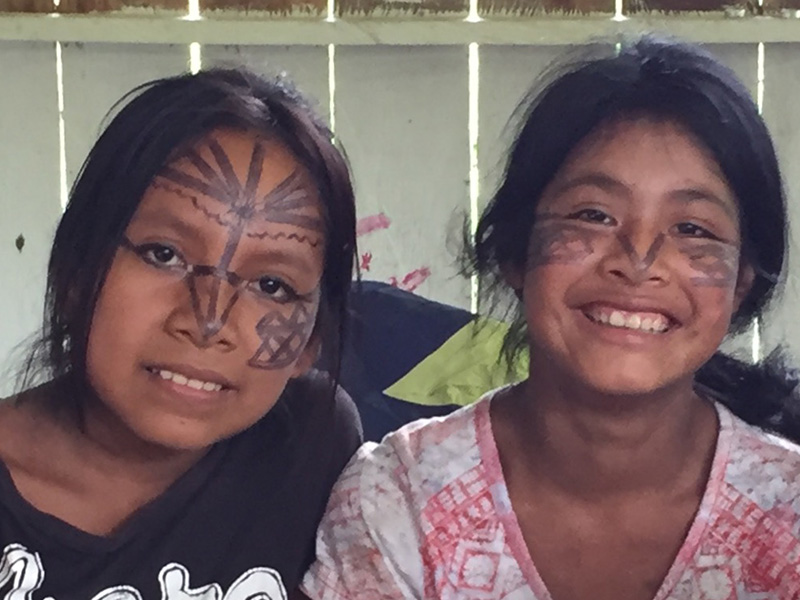
There’s a full class just 60 percent of the time, Montaguano estimated.
Some parents also want their children at home to help with farming, hunting and other domestic duties, activities Rosario Ushigua said further prevent them from keeping up with lessons.
“It’s been difficult for some parents to adjust,” she said. “Some of them understand, but others don’t prioritize their children’s education. It’s difficult to get them back on track when they fall behind.”
While it’s rare for the younger students to repeat grades, she estimates that four or five older students will have to repeat the year.
The Sápara haven’t fully adapted to the classroom-based learning found in most parts of the Western world. Less than two decades have passed since the first school was built in Llanchamacocha. Prior to its construction, the Sápara passed their knowledge down orally, through storytelling and practical lessons given during long walks through the jungle. But Western schooling has taken time away from their ancestral practices.
Weather permitting, both Montaguano and Rosario Ushigua prefer holding classes outdoors, in the kind of learning environment to which the Sápara are accustomed.
“The government uses any excuse they can get to come in on their own terms,” Montaguano said. “They have an excuse to bring in an ambulance, or a school, or a hospital, but it’s really just an excuse to set foot in our territory. The Constitution says the government is supposed to support indigenous cultures, but ultimately, they don’t contribute unless there is something to gain.”
The Sápara seem willing to do whatever it takes when their survival is at stake. Pitted against a country whose economy relies on the oil beneath their feet, the Sápara have no choice but to fight with all the knowledge they can get.
Editor’s note: All interviews were conducted through a translator.

